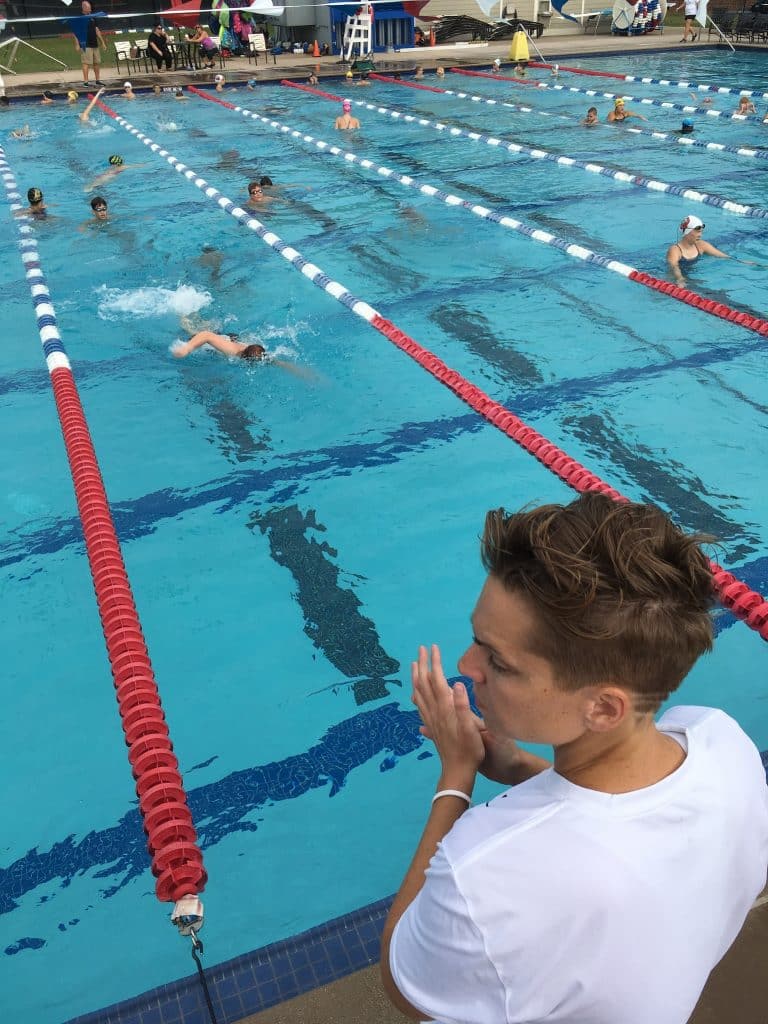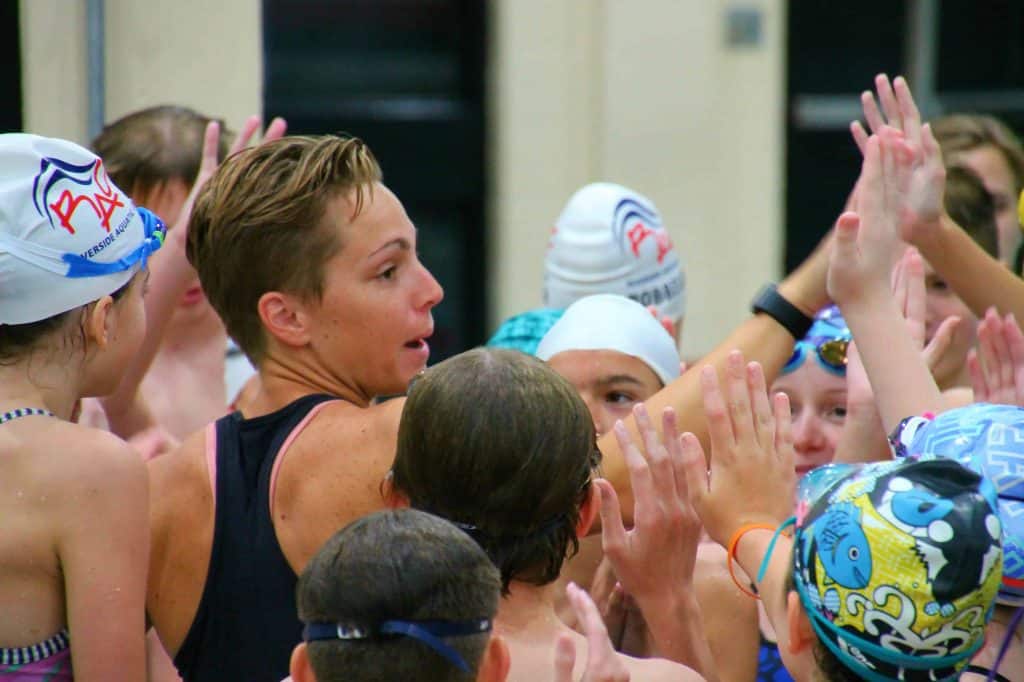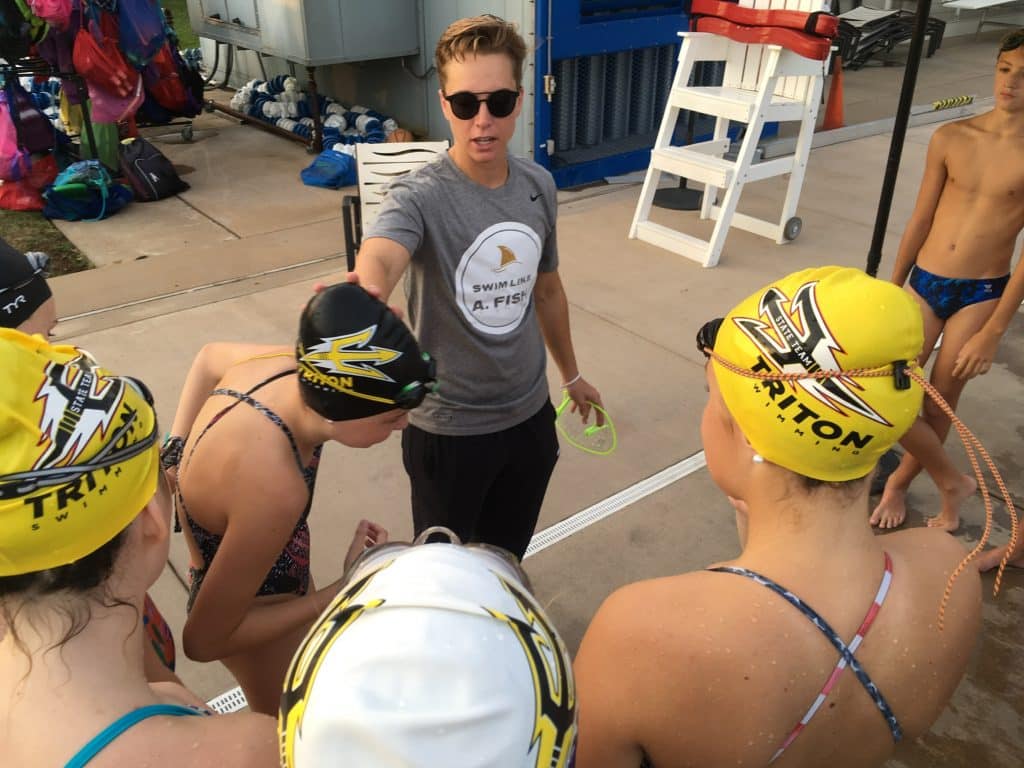When I was a competitive swimmer, I went through entire seasons without dropping any time. It was frustrating and disheartening. I put my all into every season, and I didn’t know how to cope when things didn’t go my way. Swimming can be an unforgiving, and a very honest sport. By giving it your all, you’re sure to ride a rollercoaster and learn so many invaluable life lessons along the way. One of those life lessons is that sometimes, even when we give it our all, we will fall short of our goals that season. As a coach, swim parent, or teammate, it is hard to watch your competitive swimmer learn this lesson. Thankfully, here are a few steps that are guaranteed to help your competitive swimmer in the long run and some tips on what to do if your competitive swimmer isn’t dropping time currently!
Let’s Get Started…
Step 1: Let Them Be Upset… For 10 Minutes
As with anything, feeling your feelings is an important part of moving through a difficult situation. But when we fixate on what went wrong, we can unintentionally cause ourselves to repeat the same pattern. A lot of times, not dropping time can be because of a mental block. A coach of mine actually suggested the 10 minute rule for me. I would go to the warm-down pool and allow myself to be upset, cry it out, etc. for just 10 minutes. After that, he encouraged me to move on to thinking about something else.

This was especially effective during a multiple-event, multi-day meet. If you let yourself get too upset about one performance, it can inevitably affect the others. Encourage your swimmers to find times to start fresh. Had a bad practice the day before? That’s none of today’s business. Went to a meet and got DQ’d? Focus on what you need to do at this next meet to execute legally. No matter what, the general first step is “be upset, then move on – and focus on what you can control the next time.”
Step 2: Talk with Your Competitive Swimmer & Make A Plan
Remember that the competitive swimmer and coach work TOGETHER to produce fast swimming. The swimmer can’t do well without the cooperation of the coach, and the coach can’t help the swimmer without buy-in from the swimmer.

Start by asking your competitive swimmer their perspective on what’s going on. You might be surprised as to what your swimmers say and their thoughts may help you make a better plan to move forward. If it’s in your control, the coach should remove any obstacles they can.
Then, after showing that you care and digesting your swimmer’s thoughts – including maybe going to bat for the swimmer, give them your professional advice and opinion on what YOU think is going on. Your opinion likely means a lot to the swimmer, and with your experience, you can help them get un-stuck or give them a different way to think about things.
The relationship between a swimmer and coach can be the #1 thing that gets a swimmer out of a “no-drop” slump. Communication is key here.
Step 3: Pick 1 Thing To Focus On That You CAN Improve
The tricky thing about swimming is that there a MILLION little details you can focus on. From strength training, to technique at the start, finish, turn, and every stroke in between, there’s too much for a single person to focus on properly (that’s why SLAF exists)! While the swimmer and swim coach are co-creating their plan, they should mutually agree on something that they will focus on for the next time they’ll be starting fresh.

For example: If your swimmer got DQ’d because of flipping onto their stomach too early during a Crossover Turn, then the plan should be to do several perfect crossover turns at the end of every practice while the coach checks to make sure they’re legal until the next swim meet.
If your swimmer had a bad day at practice yesterday, then today start practice with a motivational talk or quote about one thing they should be focusing on today.
If your swimmer lost a close race because they died at the end of the race, then tell them to give it their all during the day’s main set. Pump them up and be that motivation for them to DO IT!
The point is, identify 1 thing you can change, and take the time you have to focus on it and make it better!
Step 4: Have Some Fun and GIVE IT TIME
Apart from working hard to get better, it’s also important to recognize that swimming is about FUN! If you have a competitive swimmer who is struggling, or several swimmers who are struggling, then it’s time to introduce fun back into practice. A lot of times you can do this with drills or games, while still keeping technique in focus!
The final step to help a struggling swimmer is to get laughing, have fun, and just give everything some time. Your best times don’t come overnight. As long as you’re doing what you can in the moment, giving it your best, and enjoying the process, your goals will come to you.
Until next time,
Abbie Fish and the Swim Like A. Fish Team
